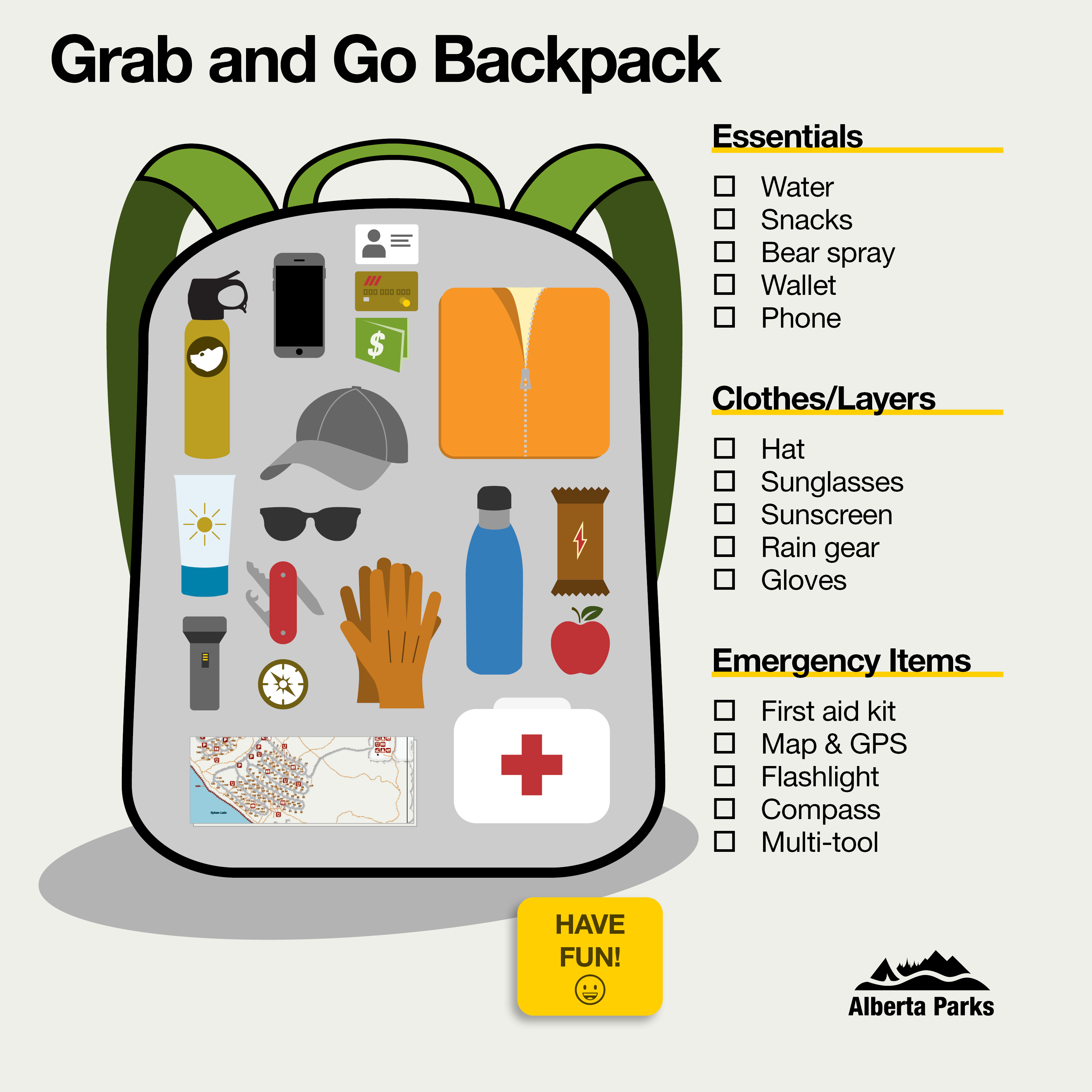From the Rocky Mountains to the badlands, Alberta Parks has thousands of kilometers of hiking trails waiting to be explored.
Before You Hike
- Research the route you plan to take. Never rely only on social media or apps to plan your trip. Read guidebooks, look at satellite images, study topo maps and check official trail reports on AlbertaParks.ca before you go.
- Ensure you have adequate information to assist with route-finding such as maps, guidebooks or a GPS file of the route. Cell service is unavailable in many parks. Always carry a map, compass and a satellite messenger.
- Leave a detailed itinerary with someone you trust. Include your route, when you’ll return, a list of party members, emergency contacts and license plate (and description of your vehicle and what staging area where it will be parked).
- Check local weather forecasts before you go. Be prepared for sudden changes in weather. Wet, cold conditions and hypothermia can turn a fun adventure into a life-threatening emergency.
- Pack appropriate equipment for your outing, like proper footwear; extra layers of clothing including a hat or toque; protection from the sun, wind and insects; a flashlight or headlamp; adequate food and water; and an emergency shelter. An emergency shelter can be as simple as an extra tarp and some rope to make a quick lean-to in a pinch.

While You Hike
- Grizzly bears, black bears and cougars live in our parks. Carry bear spray on a belt holster for quick access and know how to use it.
- If you bring your dog while hiking, remember your dog must be always kept on a leash. Wildlife regards your pet as either prey or predator, so when off leash it will stress smaller animals, or it could draw large predators and lead them back to you. Your dog's waste must be treated the same as human waste and packed out.
Hiking in the Backcountry
- In the backcountry, minimal trail maintenance occurs.
- In many backcountry areas, cell service is not available. To report an emergency once back in an area with cell service, call 9-1-1.
- Use well-defined trails and avoid short-cuts across switchbacks. Short-cuts result in erosion and create unwanted parallel trails.
- Do not travel alone in the backcountry, if possible. A small group is always safer than a single hiker. Always keep your group together. Be especially diligent at keeping children with you at all times.
- Make plenty of noise when approaching blind corners, dense shrubs and streams, and when walking into the wind. A loud shout every few minutes is more effective than bear bells.
- Remain alert. Keep your ears open. Do not wear earphones while on the trails.
- Avoid areas if you see signs of recent bear activities: fresh digging on trails, bear scat, or claw marks on trees. A dead or scavenged animal site is especially dangerous.
- Waterways in Alberta can be very cold, even in mid-summer. Crossing streams and rivers can be the most dangerous challenge that hikers confront. Visit our Water Safety page to learn more.
In Case You Need to be Rescued...
Everyone who travels in the backcountry should be fully prepared. You should plan to self-rescue if possible. If not...
Calling for Help
Dial 9-1-1 from a pay or cell phone - remember that cell phone coverage is limited in many backcountry locations.
Tell the dispatcher that you have an emergency in the park you are in.
- If you are in Kananaskis Country, the dispatcher will then transfer you to the Kananaskis Emergency Services Centre.
- While in Kananaskis Country, dialing 9-1-1 on a satellite phone may transfer you to an emergency centre unfamiliar with Kananaskis Country - if you're using a satellite phone, call the local emergency number instead (403-591-7767).
Emergency dispatch will ask you questions to better understand:
- the exact location of the emergency;
- the nature of the accident and the seriousness of any injuries;
- your name and call back number;
- and when the accident occurred.
Signalling a Helicopter
On occasion, a helicopter may be used for backcountry rescue.
To reduce confusion when a helicopter approaches, the person on the ground with a satellite phone or cell phone should remain on the line with dispatch.
Rescue staff in the helicopter are not able to communicate with people on the ground.
- It is imperative that you use standard visual signals to help communicate.
- Although dispatchers will coach you on how to make these signals, knowing them before you head into the backcountry is preferable.

Backcountry Info Links

